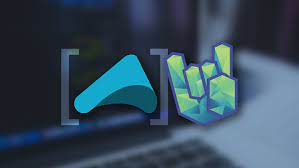Rock the JVM! Akka Essentials with Scala
Original price was: $999.00.$49.00Current price is: $49.00.
This Course is available for download now. You can contact us for Screenshots or Demo. Access for this course will be sent on google drive. Join our telegram channel to see updates and occasional discounts. If you want to pay through Paypal or Card contact us – On Telegram Click Here or contact on Mail – [email protected]
Description
Rock the JVM! Akka Essentials with Scala
Learn the Akka actor model with Scala and write parallel, concurrent and fault-tolerant systems with Akka supervision
BESTSELLER | Created by Daniel Ciocîrlan | Video: h264, 1280×720 | Audio: AAC 48KHz 2ch | Duration: 12:43 H/M | Lec: 36 | 5.95 GB | Language: English | Sub: English [Auto-generated]
then you will find this course extremely useful. Deep Learning A-Z™ is structured around special coding blueprint approaches meaning that you won’t get bogged down in unnecessary programming or mathematical complexities and instead you will be applying Deep Learning techniques from very early on in the course. You will build your knowledge from the ground up and you will see how with every tutorial you are getting more and more confident.
you will find this course refreshing, inspiring and very practical. Inside Deep Learning A-Z™ you will master some of the most cutting-edge Deep Learning algorithms and techniques (some of which didn’t even exist a year ago) and through this course you will gain an immense amount of valuable hands-on experience with real-world business challenges. Plus, inside you will find inspiration to explore new Deep Learning skills and applications.
Mastering Deep Learning is not just about knowing the intuition and tools,
it’s also about being able to apply these models to real-world scenarios and derive actual measurable results for the business or project. That’s why in this course we are introducing six exciting challenges:
In this part you will be solving a data analytics challenge for a bank. You will be given
a dataset with a large sample of the bank’s customers. To make this dataset, the bank gathered information such as customer id, credit score, gender, age, tenure, balance,
if the customer is active, has a credit card, etc. During a period of 6 months, the bank observed if these customers left or stayed in the bank.



